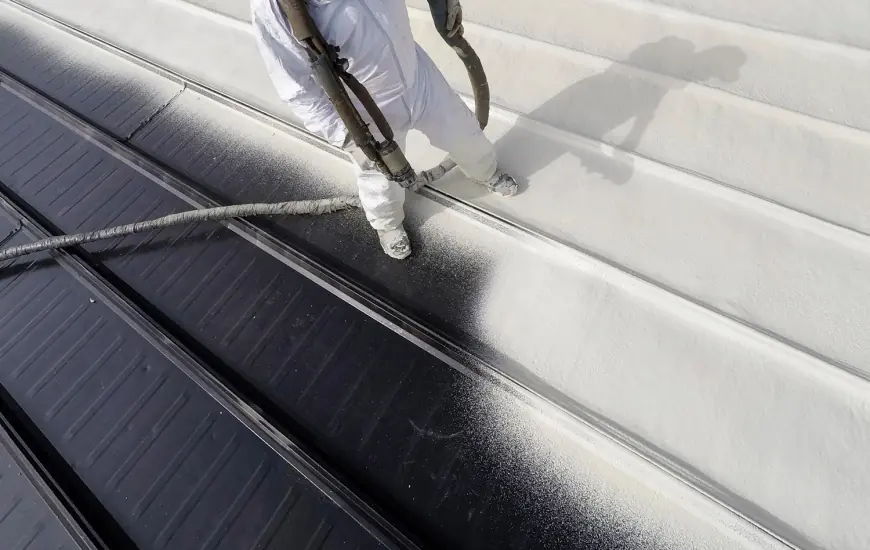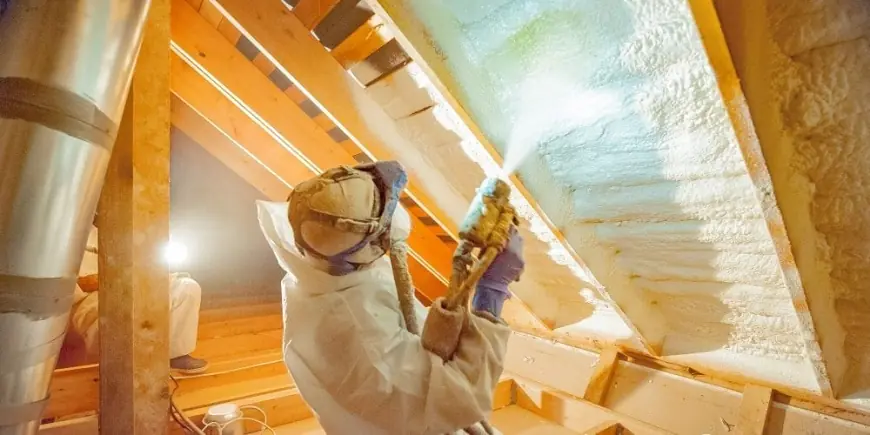How Open-Cell Spray Foam Insulation Supports Indoor Air Quality

Ever walked into a room and immediately felt your sinuses panic? That stale, stuffy, "something’s definitely growing behind that wall" air? Yeah—most people blame the HVAC. But poor insulation plays a bigger role in indoor air quality than most expect, especially when it comes to open-cell spray foam.
This stuff doesn’t just trap heat or cut energy bills. It can actually support cleaner, more breathable indoor environments. For property owners dealing with funky odors, persistent humidity, or allergy flare-ups, understanding how open-cell foam fits into the air quality equation is worth a closer look.
Open-Cell Foam Helps Regulate Indoor Humidity
Controlling indoor moisture is key to healthy air—and open-cell spray foam insulation services plays a quiet but steady role in managing it.
Open-cell foam has a soft, flexible texture and an open structure. That means it can absorb small amounts of moisture without getting soggy or degraded. More importantly, it lets vapor pass through, preventing trapped moisture from turning into mold food.
Why Vapor Permeability Isn’t a Bad Thing
A lot of building materials try to block moisture completely. But in walls, that can actually trap condensation. Open-cell foam lets walls breathe, releasing trapped vapor before it condenses and causes problems.
Where This Matters Most Indoors
Open-cell foam works especially well in interior walls, attics, and ceilings where air exchange still happens. It maintains thermal insulation while also allowing humidity to dissipate instead of accumulate.
Fun Fact: Open-cell foam typically has a vapor permeability rating of around 10 perms per inch—enough to allow drying while still sealing air.
Airtight Sealing Without Chemical Off-Gassing
Air leaks carry more than just drafts—they move dust, pollen, and outdoor contaminants straight into indoor air. Open-cell foam expands to fill cracks, blocking those leaks effectively. But unlike some materials, it doesn’t release lingering fumes once cured.
Most open-cell spray foams used in residential applications today are low-VOC and formaldehyde-free, meaning they don't contribute to indoor chemical exposure.
How It Seals Without Suffocating the Space
Open-cell foam provides excellent air sealing, but because of its vapor-permeable nature, it doesn't create a plastic-wrapped room. This supports better air exchange via mechanical ventilation systems without the mess of uncontrolled airflow.
No Fibers, No Dust
Unlike batt or blown-in insulation, open-cell foam doesn’t release particulates into the air over time. No fibers falling into vents. No settling material to stir up. Once applied, it stays in place—quietly doing its job without polluting indoor space.
Fun Fact: Open-cell foam can expand up to 100 times its size during application, which allows it to reach deep into framing cavities and seal tiny crevices invisible to the eye.
Allergens, Odors, and Airborne Pollutants Stay Out
People often assume air quality depends solely on filters or purifiers. But insulation is the first line of defense—especially against pollen, smoke, and pollutants creeping in through poorly sealed gaps.
When applied correctly, open-cell spray foam acts as a physical air barrier. It stops outdoor air from bypassing filters entirely by sealing entry points at the envelope level.
Odor Control Through Isolation
Old insulation materials often absorb odors and slowly release them back into the air. Open-cell foam doesn't absorb smells the same way. Once cured, it’s inert—meaning it won't trap or release unpleasant scents.
Consistent Air Means Fewer Allergy Triggers
When temperature and humidity fluctuate wildly, mold and dust mites thrive. Open-cell foam keeps conditions stable enough to prevent those biological triggers from taking hold, especially in places like crawlspaces or wall cavities behind bathrooms and kitchens.

Energy Efficiency Plays a Supporting Role in Indoor Air Quality
Energy performance might seem unrelated to air quality—but the connection is real. Better insulation means HVAC systems run less often, avoid pressure imbalances, and filter air more consistently. Open-cell foam supports all of that through its efficiency and air sealing.
Lower HVAC Load = Cleaner Circulation
With tighter insulation, HVAC units don't need to cycle constantly. That reduces dust movement and helps filtration systems work more effectively without overuse.
Temperature Control Supports Balanced Humidity
When temperatures inside stay stable, so does the relative humidity. That reduces condensation on walls and windows—two areas where indoor mold typically gets a foothold.
Comparison Table: Open-Cell Spray Foam vs. Traditional Insulation for IAQ
Not All Open-Cell Foams Are Equal
Before assuming every product labeled “open-cell” is healthy, it’s important to look at how it's manufactured and applied. Cheaper formulas may contain more VOCs or lack third-party certifications.
Look for Low-VOC Certification
Spray foams labeled as GREENGUARD Gold or certified low-VOC typically emit fewer harmful compounds and are safer for use in homes with children, pets, or sensitive individuals.
Application Practices Matter
Spray foam should only be applied by trained professionals using proper ventilation during curing. Once cured, it’s inert—but during install, ensuring proper air turnover matters for safety and air quality.
Common Question: Is Open-Cell Foam Better Than Closed-Cell for Air Quality?
Both types of spray foam provide air sealing, but open-cell offers better vapor permeability and softer flexibility. In living areas where wall drying potential and air exchange matter, open-cell may be the healthier long-term choice. Closed-cell is better in moisture-heavy areas like basements or crawlspaces.
Conclusion
Open-cell spray foam supports indoor air quality in more ways than one. From reducing airborne allergens to balancing humidity and sealing pollutant pathways, it plays a quiet but critical role in keeping air cleaner, fresher, and more breathable.
Unlike traditional materials that shift, settle, or shed fibers, open-cell foam stays put—providing consistent performance without the drawbacks of fiberglass or cellulose. It doesn’t just boost comfort or energy efficiency. It improves how a space feels to live or work in.
For property owners who care about healthier indoor environments—especially for families, workers, or allergy-sensitive occupants—open-cell spray foam from a trusted spray foam insulation company can be a key part of the solution.

FAQs
Does open-cell spray foam reduce allergens indoors?
Yes. It seals out pollen and outdoor pollutants while reducing air leaks that carry dust and allergens. Its fiber-free structure also means it won’t release irritants into the air over time.
Is open-cell spray foam safe after installation?
Once cured, open-cell spray foam is inert and low in VOCs, especially if labeled low-emission or GREENGUARD certified. Proper ventilation during application ensures a safe environment once installed.
Can open-cell spray foam prevent mold?
It helps reduce mold risk by limiting air infiltration and managing humidity. Its vapor permeability allows drying instead of trapping condensation—crucial for wall cavities and ceilings.
Does open-cell insulation smell?
Properly cured open-cell foam has little to no odor. Unlike batt or cellulose insulation, it won’t retain smells from the surrounding environment.
Is open-cell spray foam good for allergy sufferers?
Yes. It creates a sealed barrier that blocks allergens from entering while reducing dust circulation. Its consistent performance supports healthier, low-irritant air conditions indoors.
Reviewer
Reviewer: With nearly a decade in the spray foam insulation field, William Harris reviewed this post and provided guidance that reflects both technical understanding and real-world marketing experience.
What's Your Reaction?
 Like
0
Like
0
 Dislike
0
Dislike
0
 Love
0
Love
0
 Funny
0
Funny
0
 Angry
0
Angry
0
 Sad
0
Sad
0
 Wow
0
Wow
0


















































